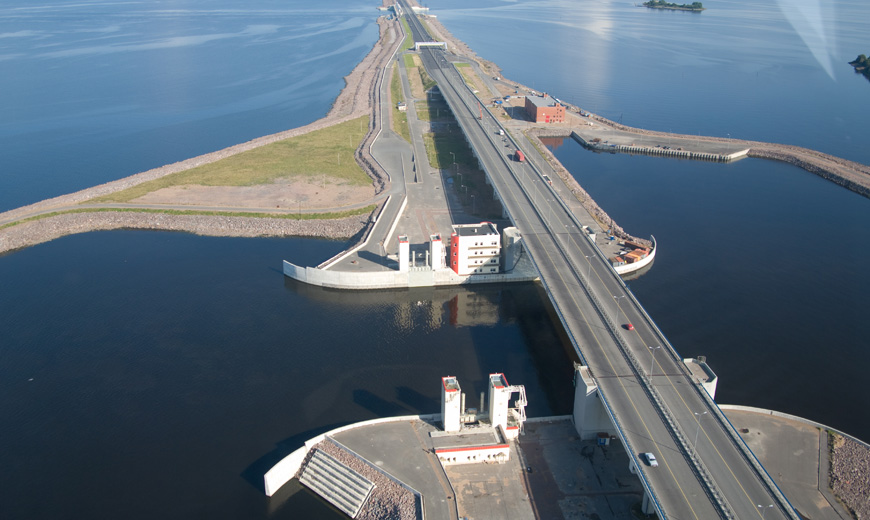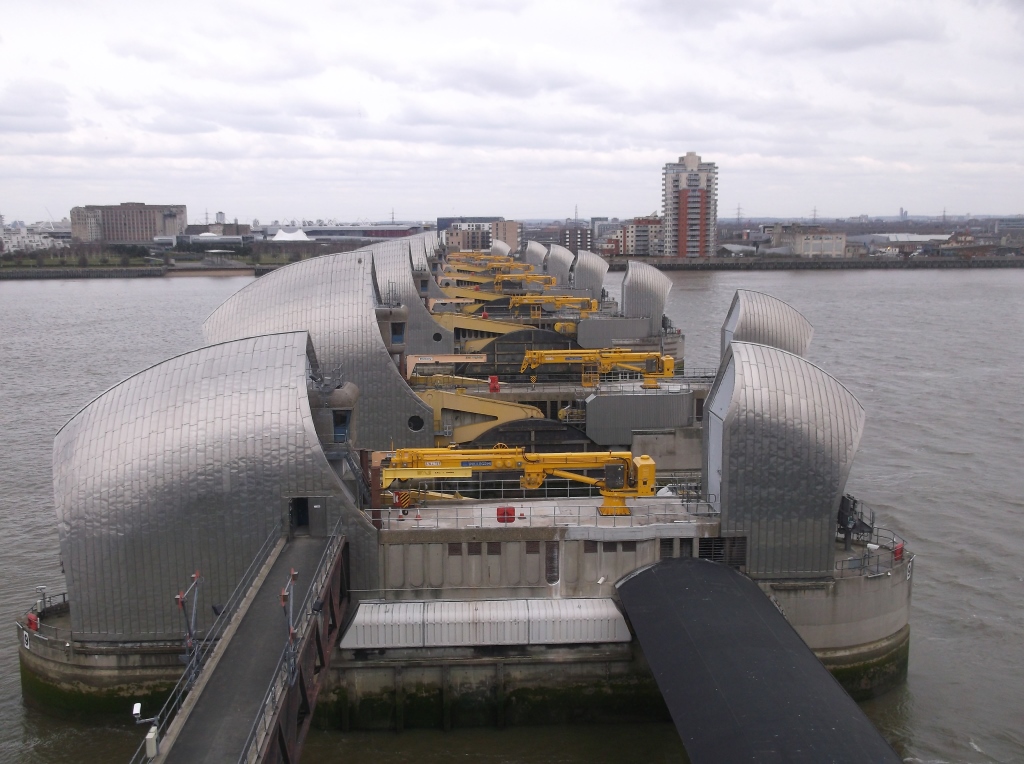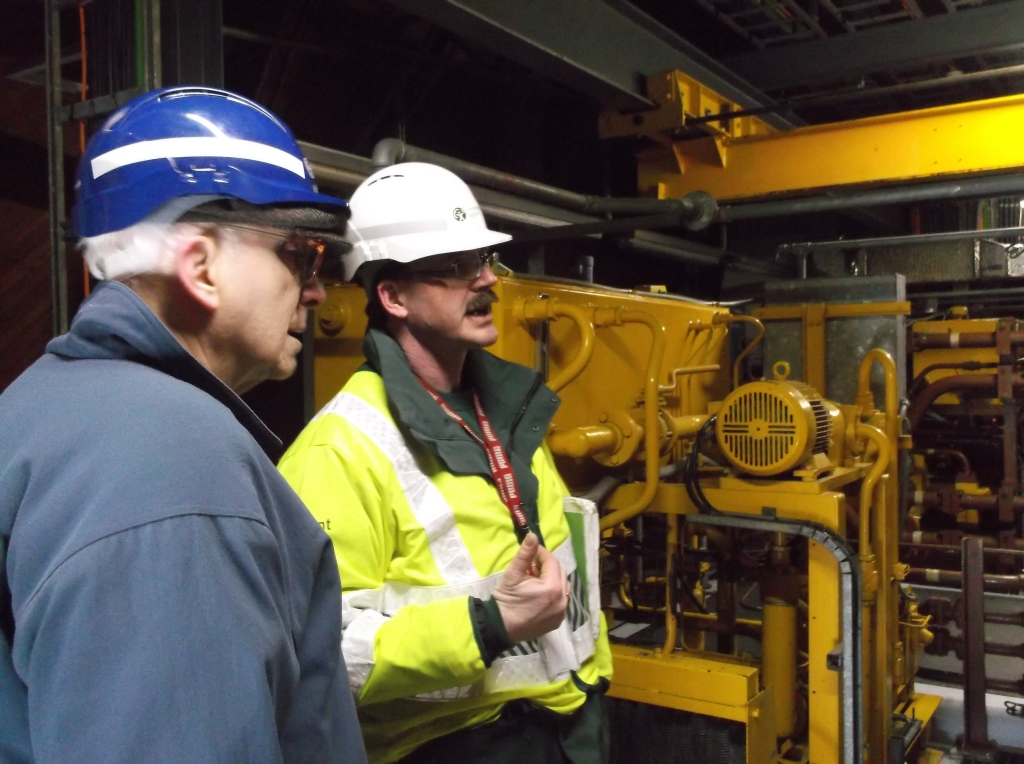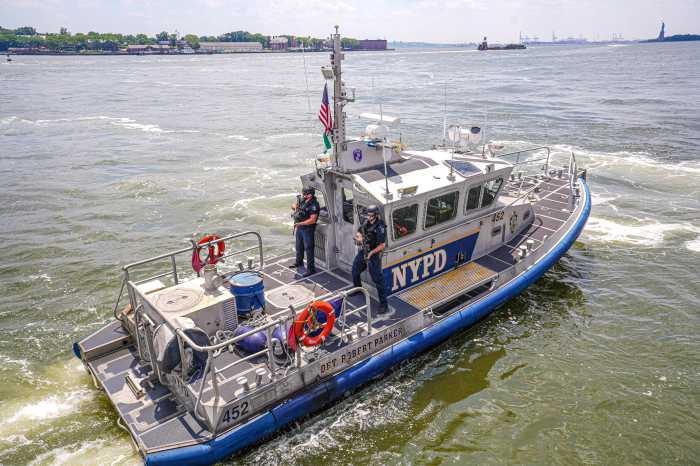
BY DUSICA SUE MALESEVIC | Almost three years after Superstorm Sandy devastated several parts of New York and New Jersey, the US Army Corps of Engineers will conduct a $3 million study of the region.
The study will also analyze possible protective measures, including a storm surge barrier between the Rockaways in New York to Sandy Hook in New Jersey — a five-mile passage between the two states.
For Robert Trentlyon, longtime Chelsea resident, former newspaper publisher (including our sister publication, Downtown Express) and waterfront and park advocate, this is welcome news.
“It feels wonderful,” Trentlyon said in a phone interview. “I’m in a constant state of euphoria. I feel that something has been accomplished.”
Trentlyon, who helped with the creation of Chelsea Waterside Park and Hudson River Park, has been sounding the alarm about sea levels and the necessity of storm surge barriers since 2009. He had what he termed a “moment of discovery” when he retired that year.
“I said, ‘New York is going to be hit be a major, major storm and we’re not ready for it,’ ” he recalled. “ ‘What we really need are probably storm surge barriers.’ I’m not quite sure why I was so prescient.”
Neither a scientist nor an engineer, Trentlyon embarked on a journey to learn more, and found Stony Brook University professors Douglas Hill and Malcolm J. Bowman. Both are part of the university’s Storm Surge Research Group, which was formed in 2002.
While he couldn’t bring technical expertise, Trentlyon had something else to bring to the table: deep roots in the community and access to elected officials.
“I had a special talent that none of them had, and that was I knew the territory,” he said. “I knew all the elected officials. I knew all the heads of community boards.”
Trentlyon is also the founding president of the Chelsea Reform Democratic Club. A friend, he recalled, asked if he was interested in starting a political club in Chelsea.
“I have this terrible habit of whenever I get involved in something, I immediately become the president,” he said with a laugh.
He began talking to community boards about the necessity of storm surge barriers, starting with Community Board 4, where he once was a public member. He also gave presentations to Community Boards 1 and 2.
By spring 2012, he went before the Manhattan Borough Board, comprised of community board chairs and the borough’s city councilmembers. The board passed a resolution in favor of studying the barriers. Comparing himself to Paul Revere, who warned the colonialists that the British were coming, Trentlyon said, “I’m telling you, ‘The storm surge is coming.’”
Later that year, on Oct. 29, Superstorm Sandy hit and became the second most costly natural disaster in US history, with some estimates of the storm costing $50 billion.

The Army Corps study will cover the New York and New Jersey Harbor and will look at a variety of alternatives to provide risk reduction from coastal flooding, according to an Army Corps spokesperson in an email.
The study is in its early stages and is expected to take three years, although it could take longer, as well as cost more than the $3 million estimate given the large area and population, he said.
At this time, it is unknown whether storm surge barriers will be implemented. The study will also look at levees, floodwalls and other measures to determine which are feasible economically, also taking into account the environment and public acceptability, the spokesperson said.
The Army Corps has undertaken the study, he said, as part of President Barack Obama’s fiscal year 2016 budget that recommended the study. The results of the North Atlantic Coast Comprehensive Study identified the New York Harbor and tributaries as an area warranting study to reduce coastal flooding risk, he said.
“I’ve been hoping that the Corps would do this for a long time now,” said Malcolm J. Bowman, a professor of physical oceanography, in a phone interview.
Bowman has been studying storm surge barriers since the ’90s, and after Hurricane Katrina hit New Orleans, wrote a 2005 op-ed about them in the New York Times.
“When I wrote that, I felt something like old Noah in the Bible saying, ‘There’s a big flood coming, you better start building the ark,’ ” he said.
He was also a member of the New York City Panel on Climate Change during parts of the Bloomberg administration, and noted people were hostile to the idea of storm surge barriers, claiming that they were too costly and huge.
Bowman’s idea was that there would be one storm surge barrier between Sandy Hook and the Far Rockaways, about 20 feet above the water. The gates, Bowman said, are akin to saloon doors, which would be open the majority of time, but shut tight when a storm or hurricane was on its way.
Another smaller barrier would be placed on the East River, near Throggs Neck, he said.
Other cities, such as London and St. Petersburg, have storm barrier systems. Trentlyon has visited the Thames River Barrier and said, “There hasn’t been a drop of water [from flooding] in Central London since they built it.”

Both Trentlyon and Bowman said that the St. Petersburg’s system might be a good example for New York City. The city has a 16-mile flood protection barrier that has a highway on top of it.
Bowman said something similar could be created in this region — for example, the connection between the two states could also be used as an interstate toll road. Another possibility could be a train between JFK and Newark airports.
“It’s not a New York City problem,” he said. “It’s not just a New Jersey problem. It’s a regional problem.”
“Finally, we’re making some progress, in that the Army Corps will do such a study,” he noted.



































